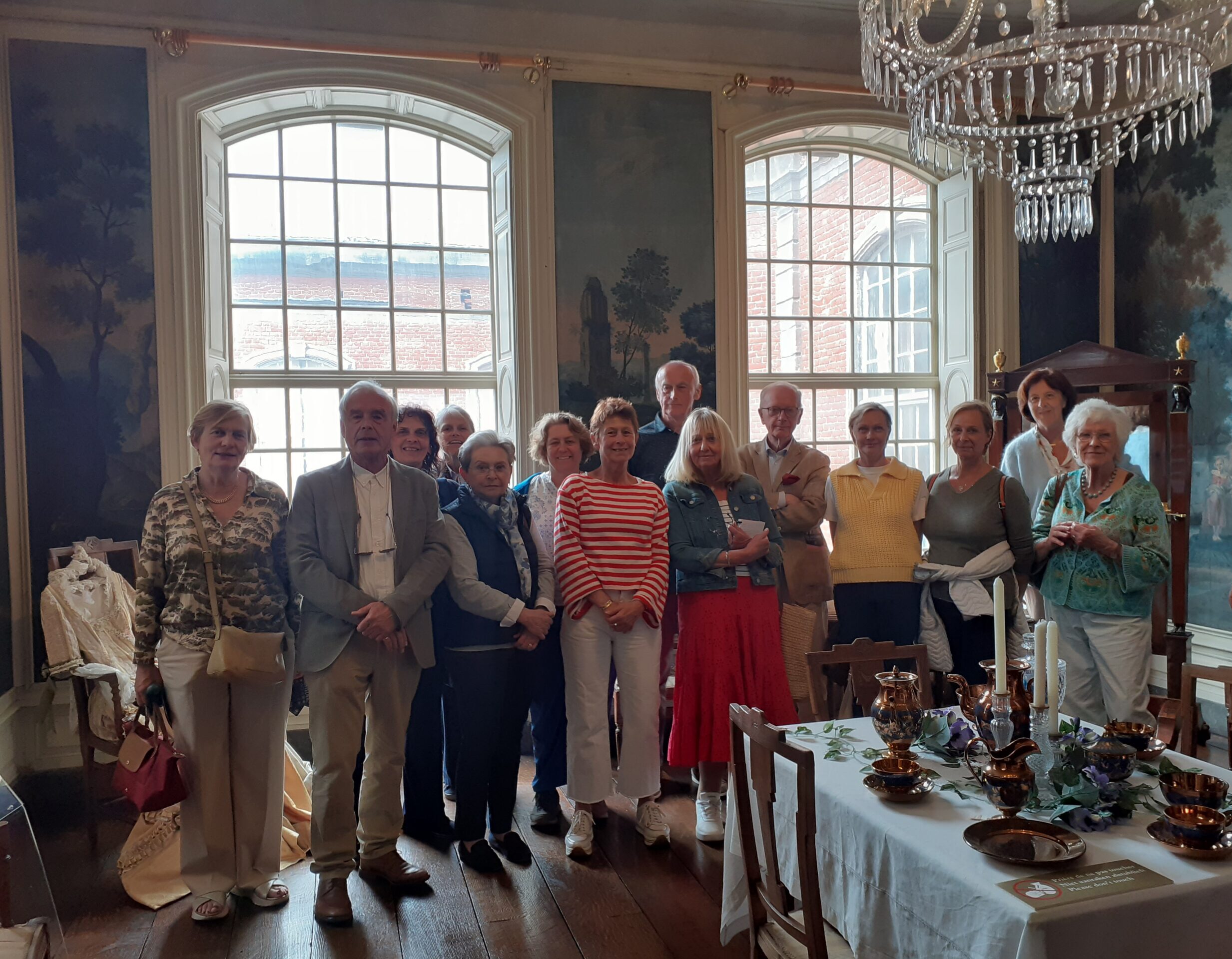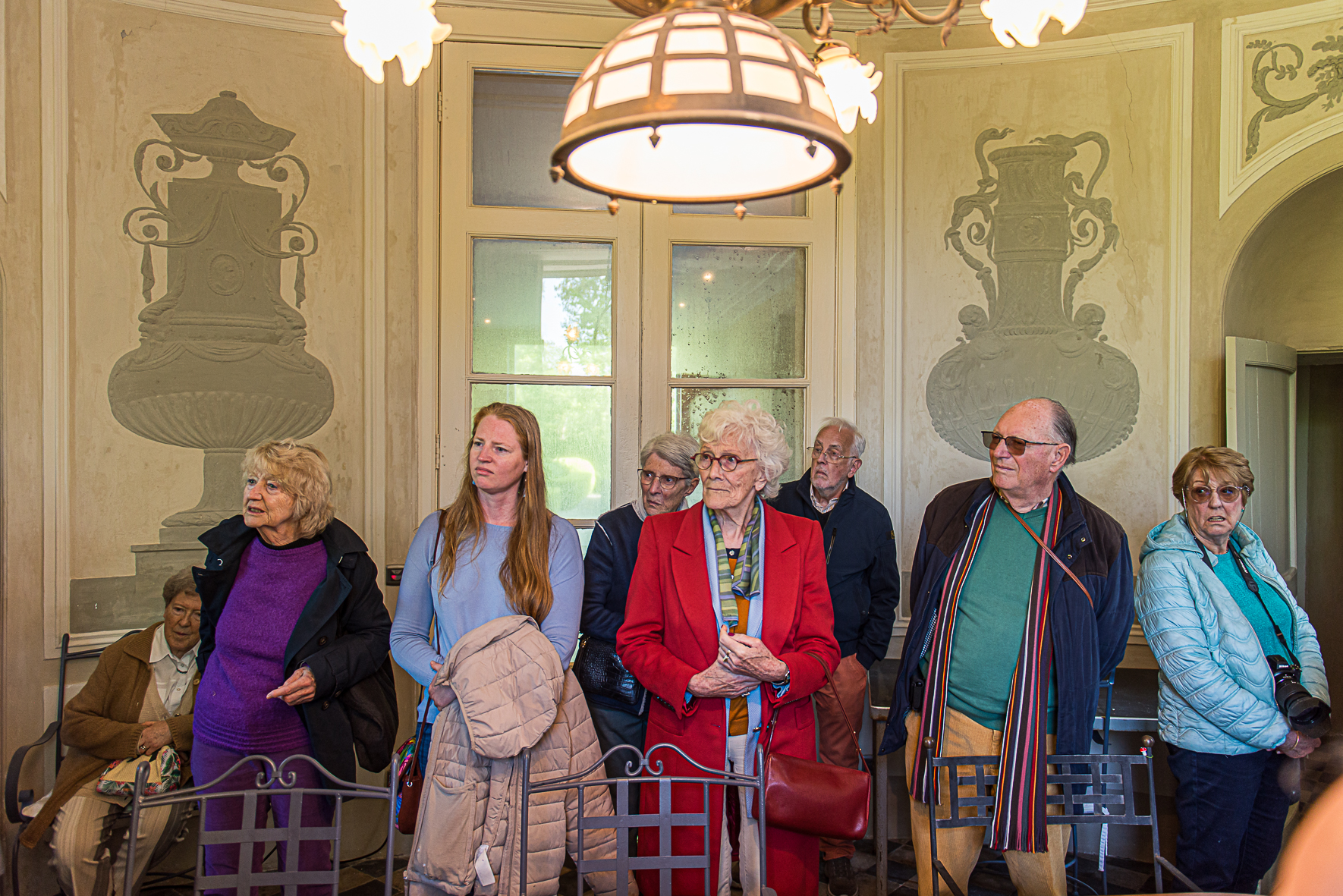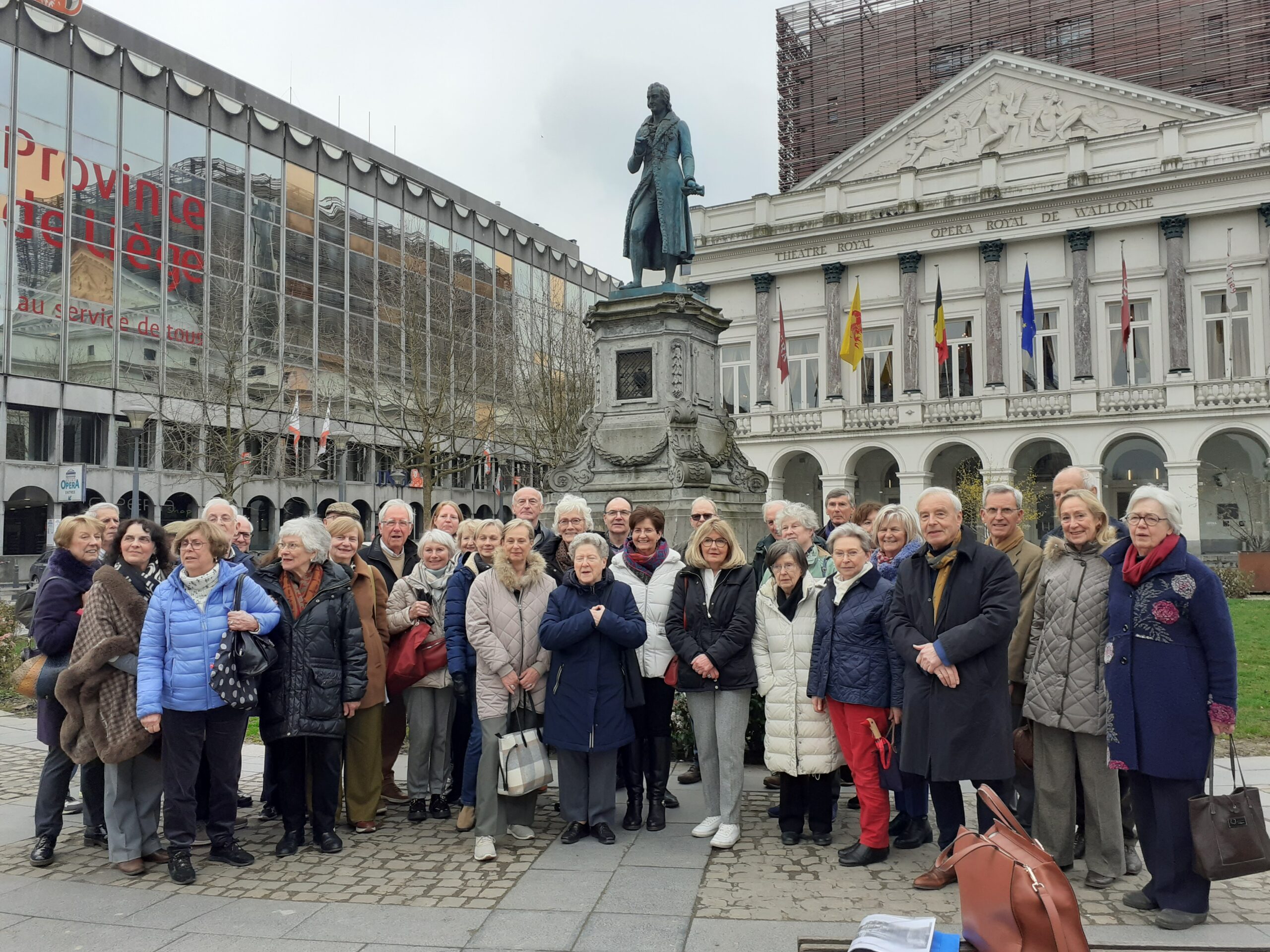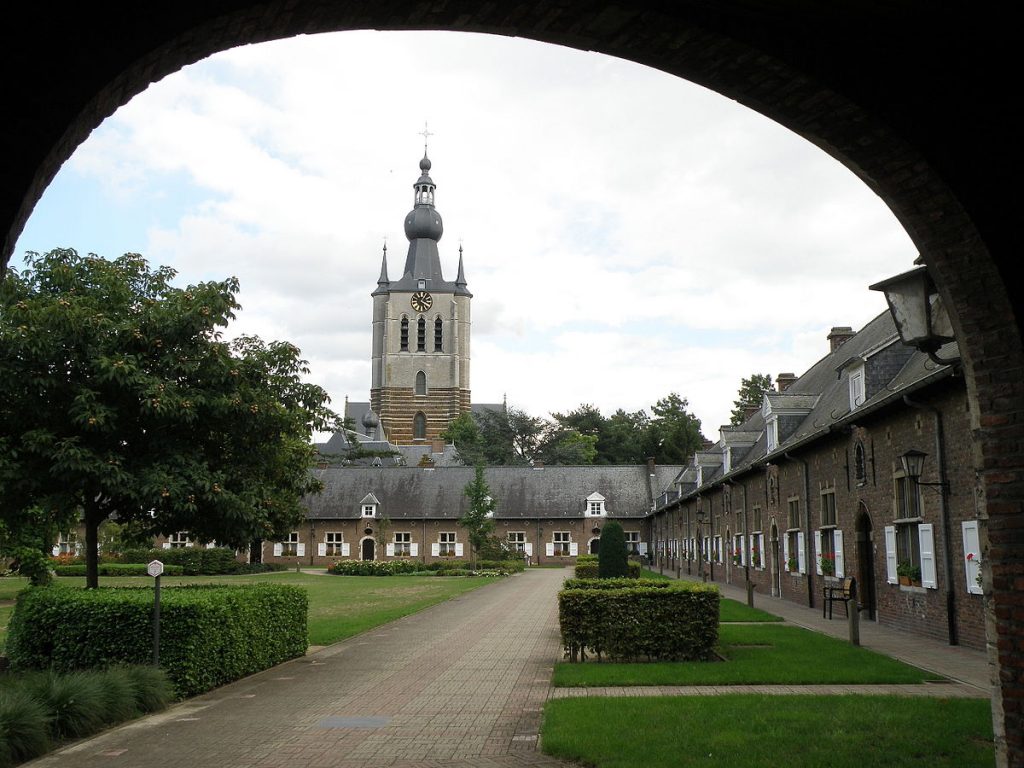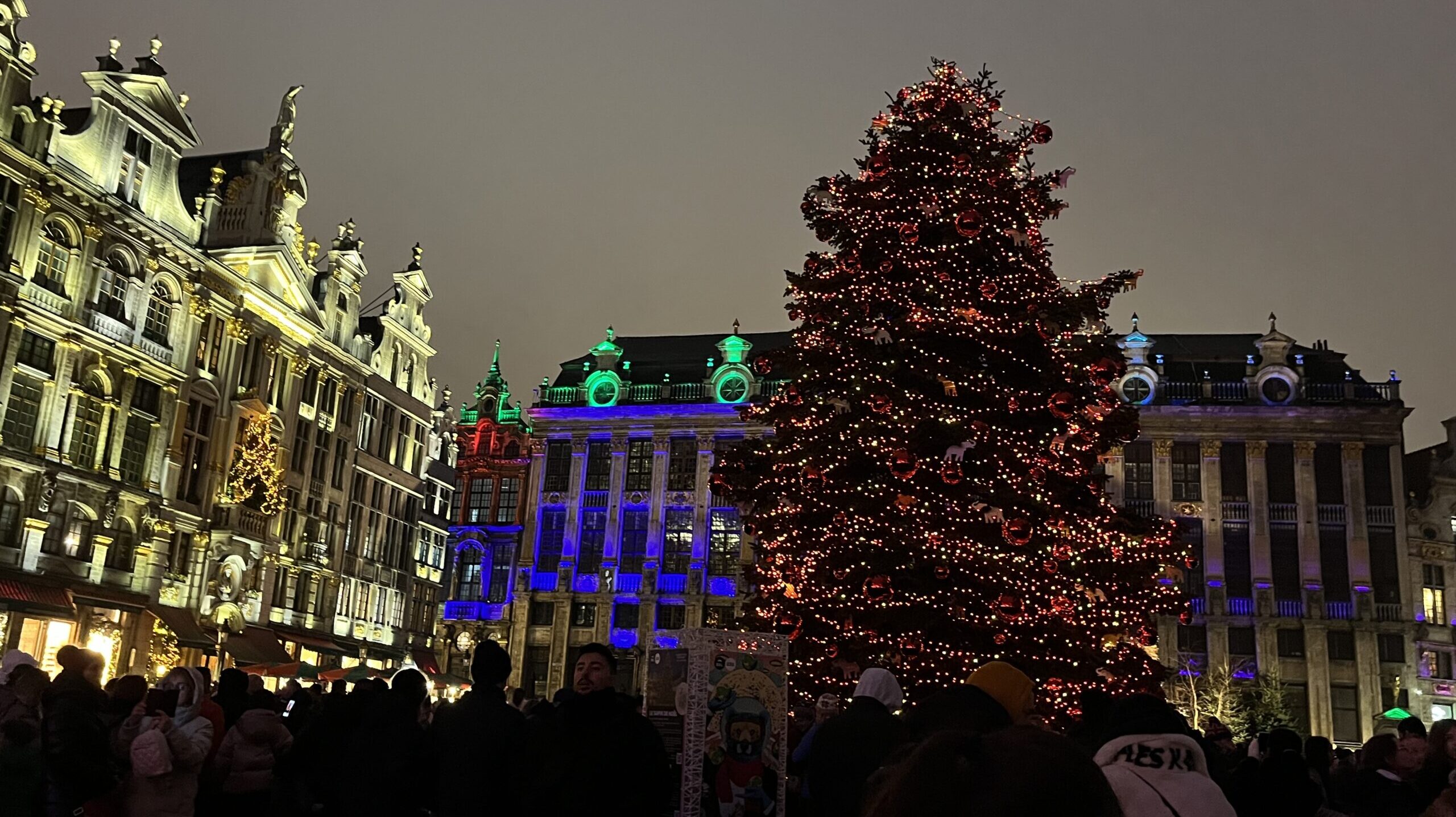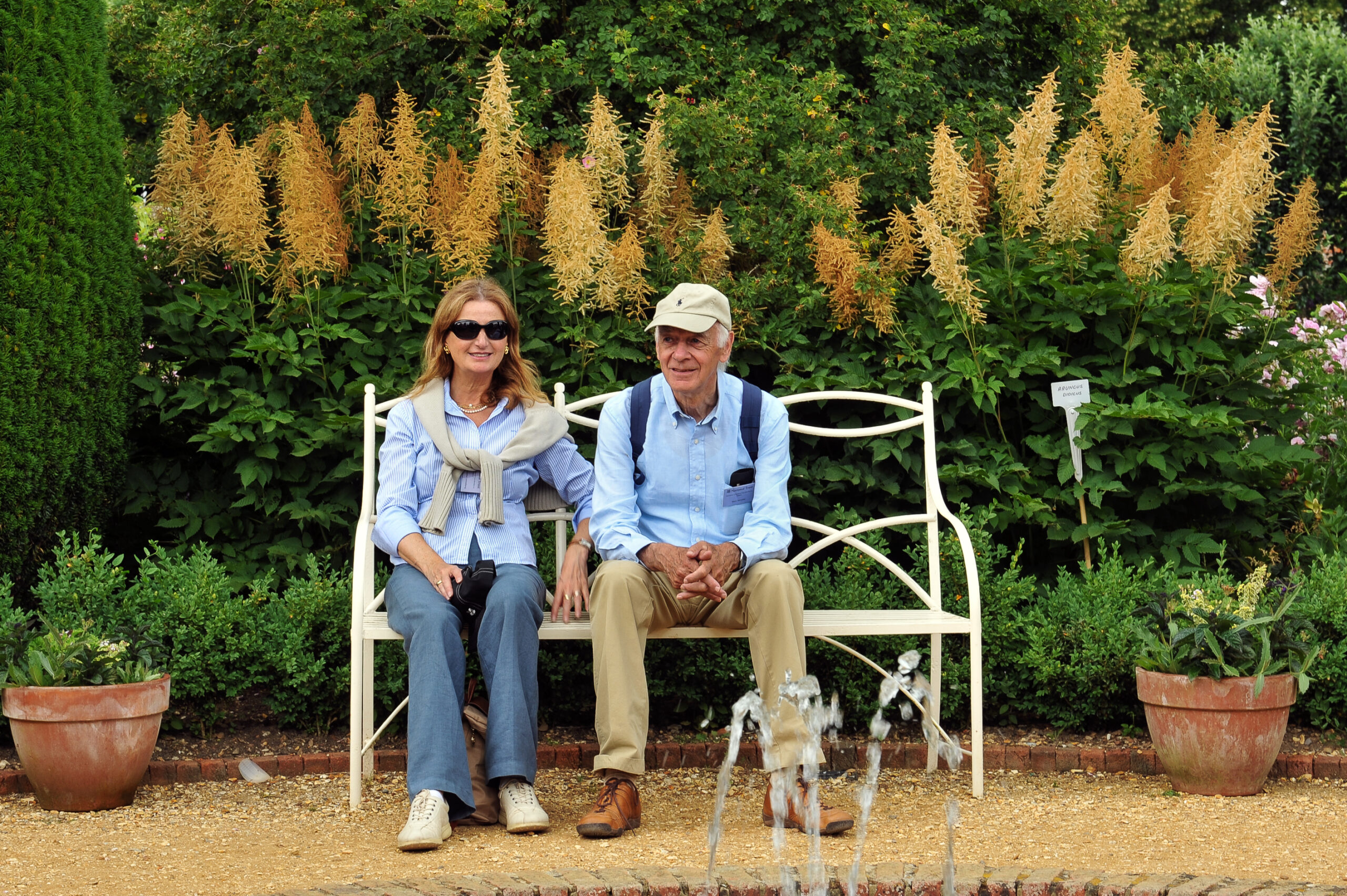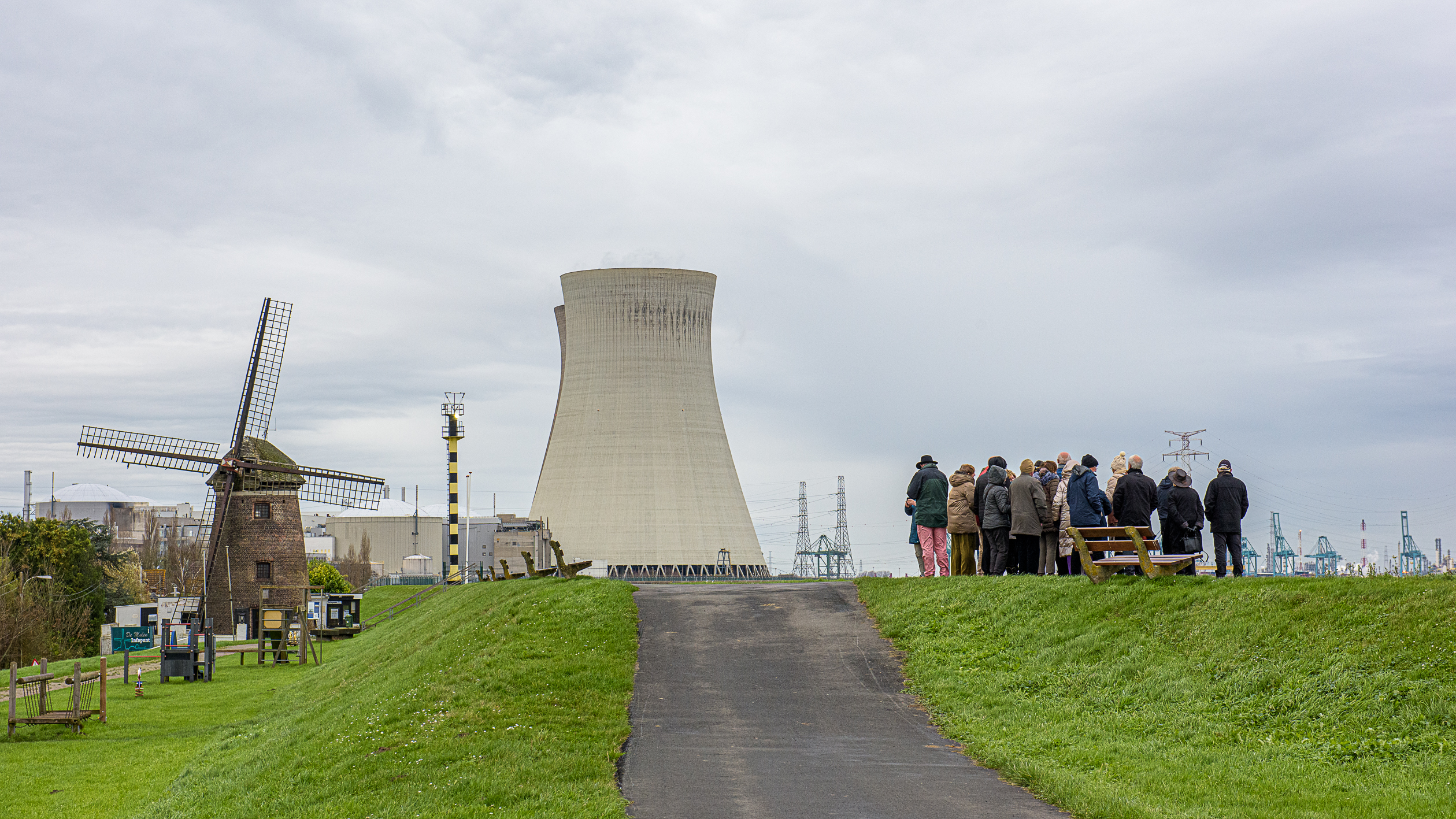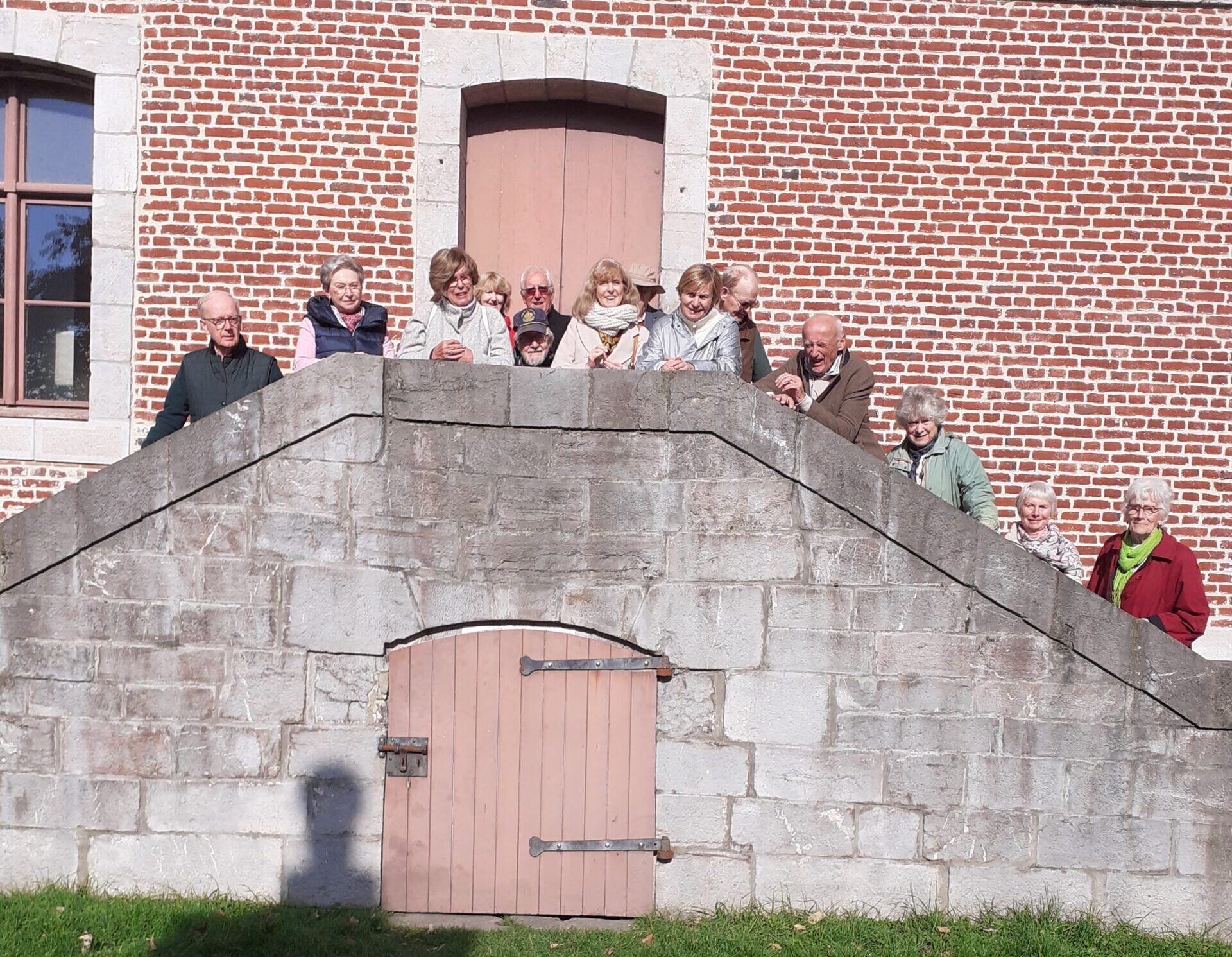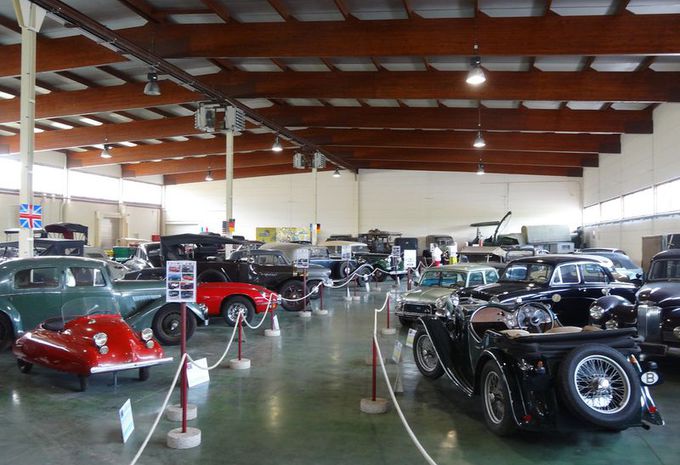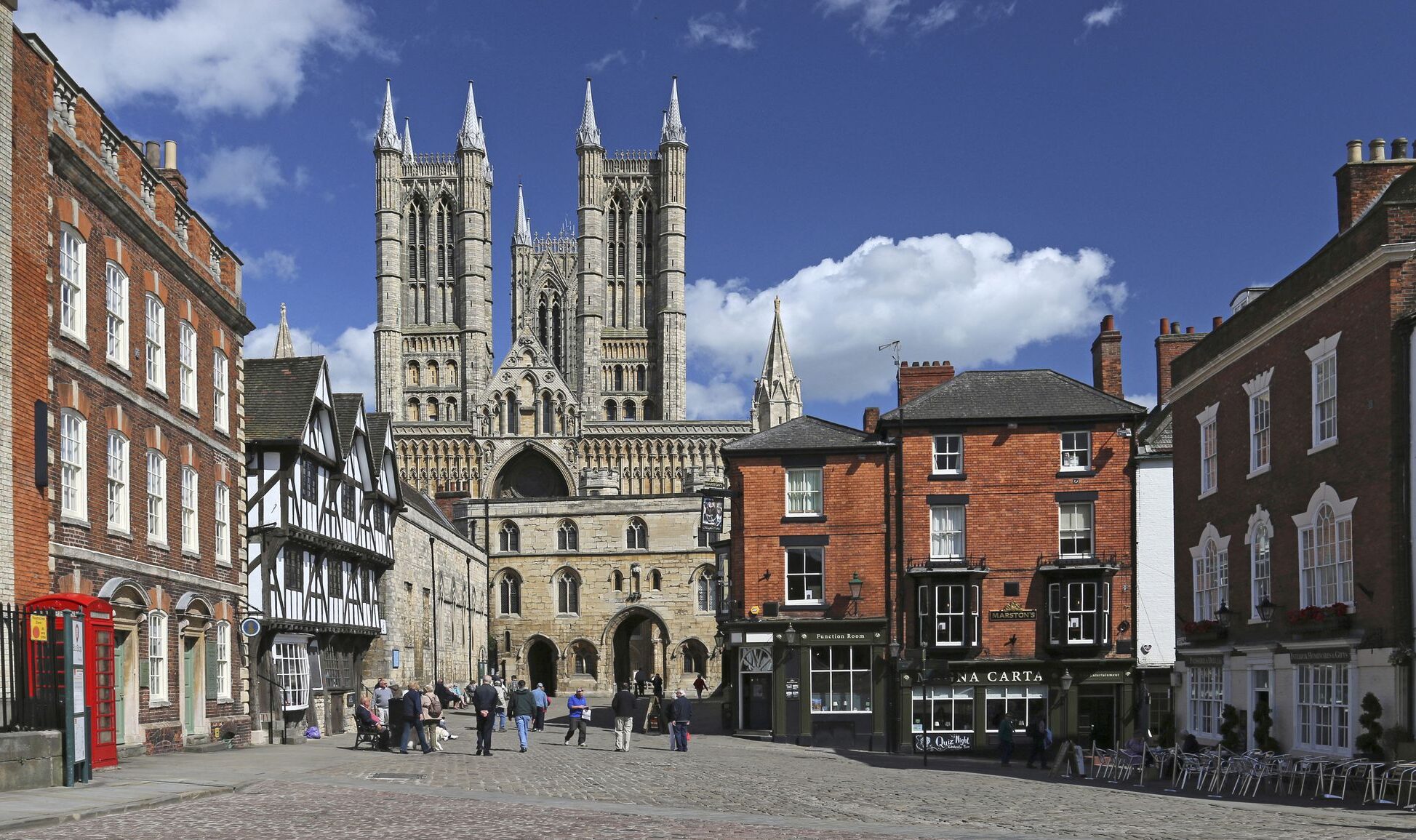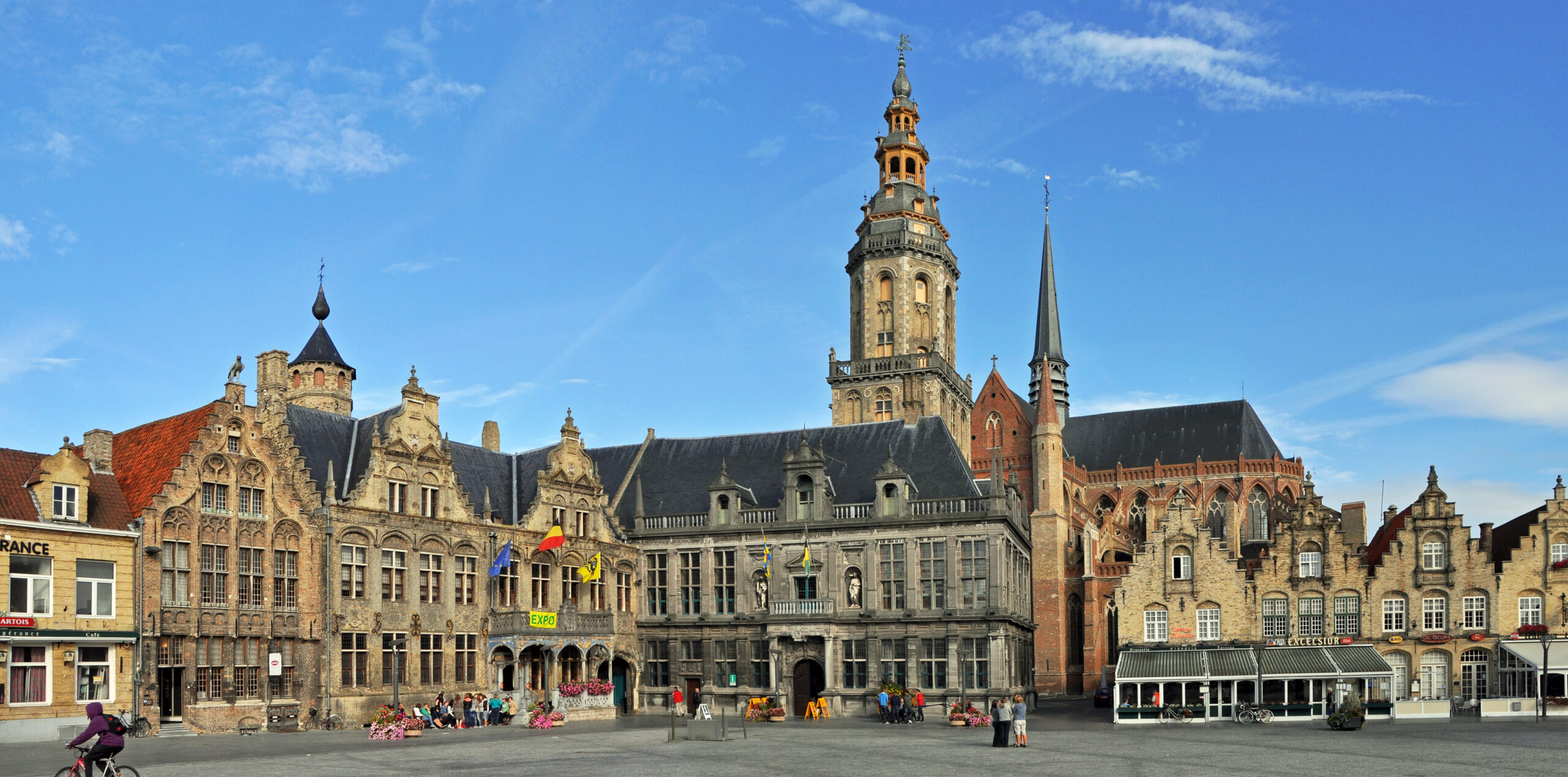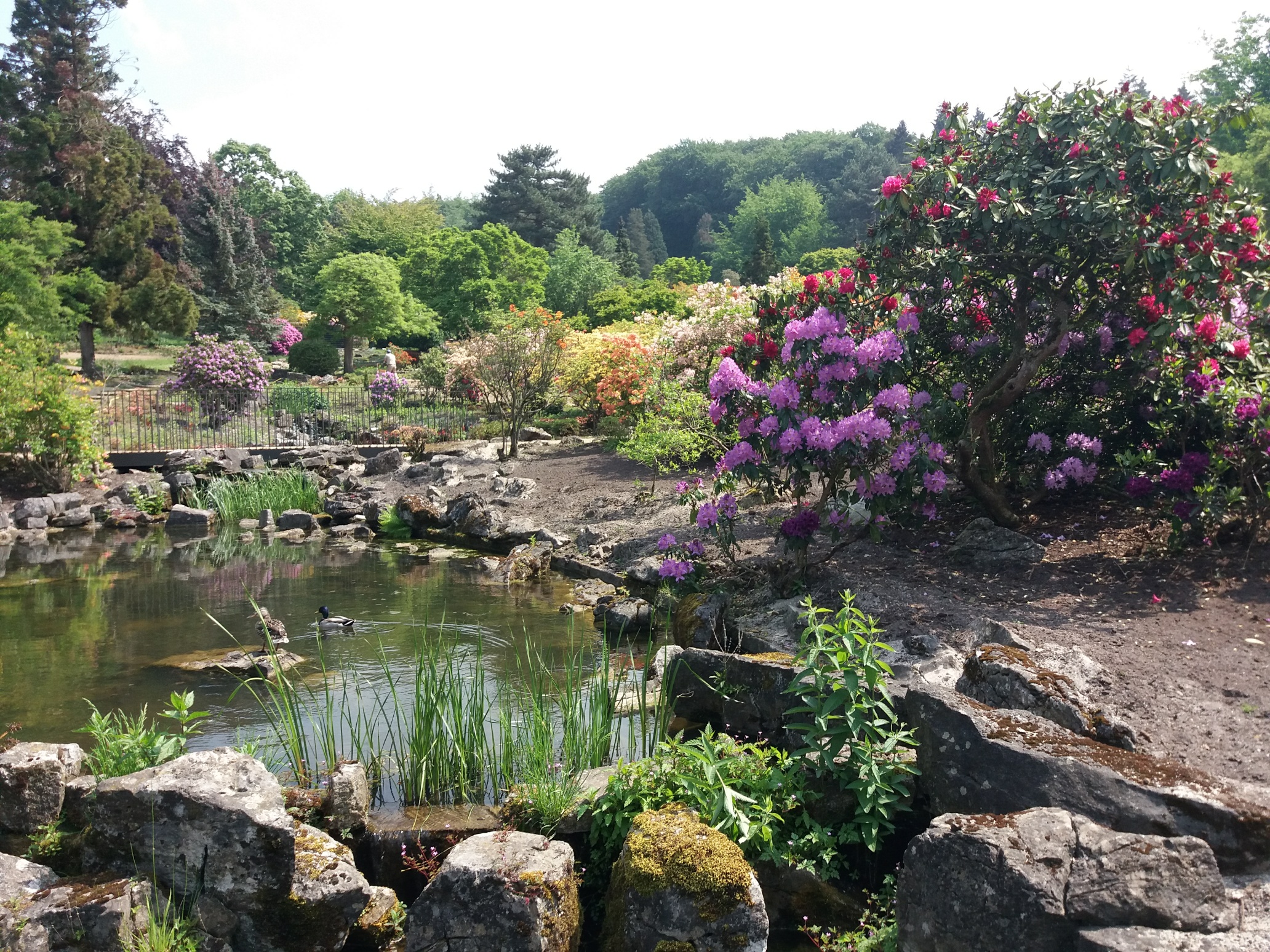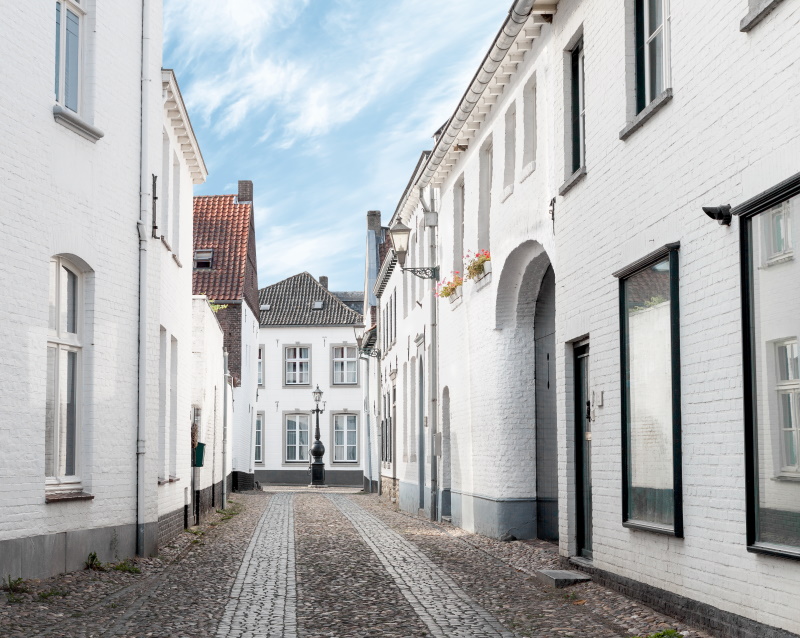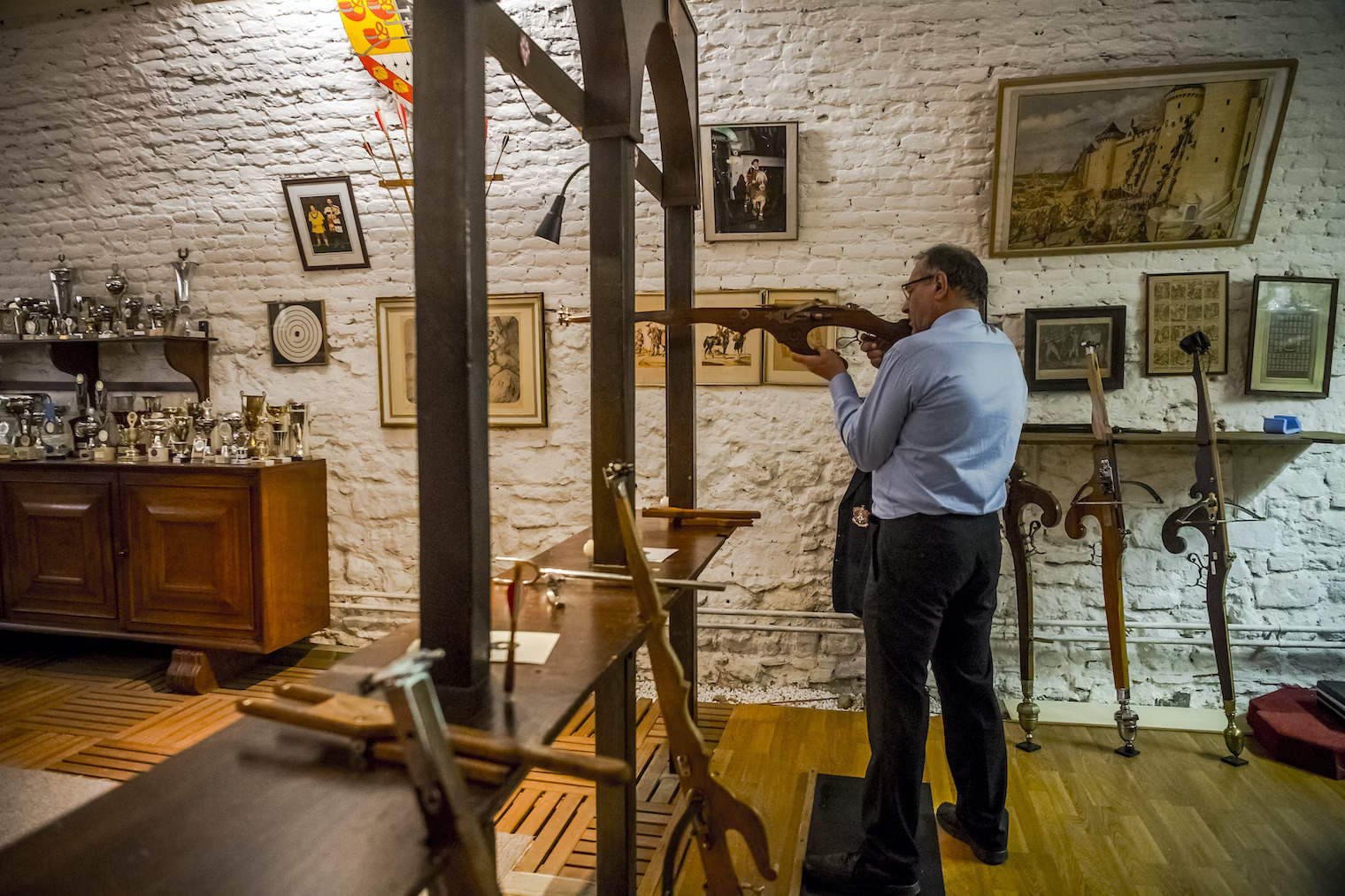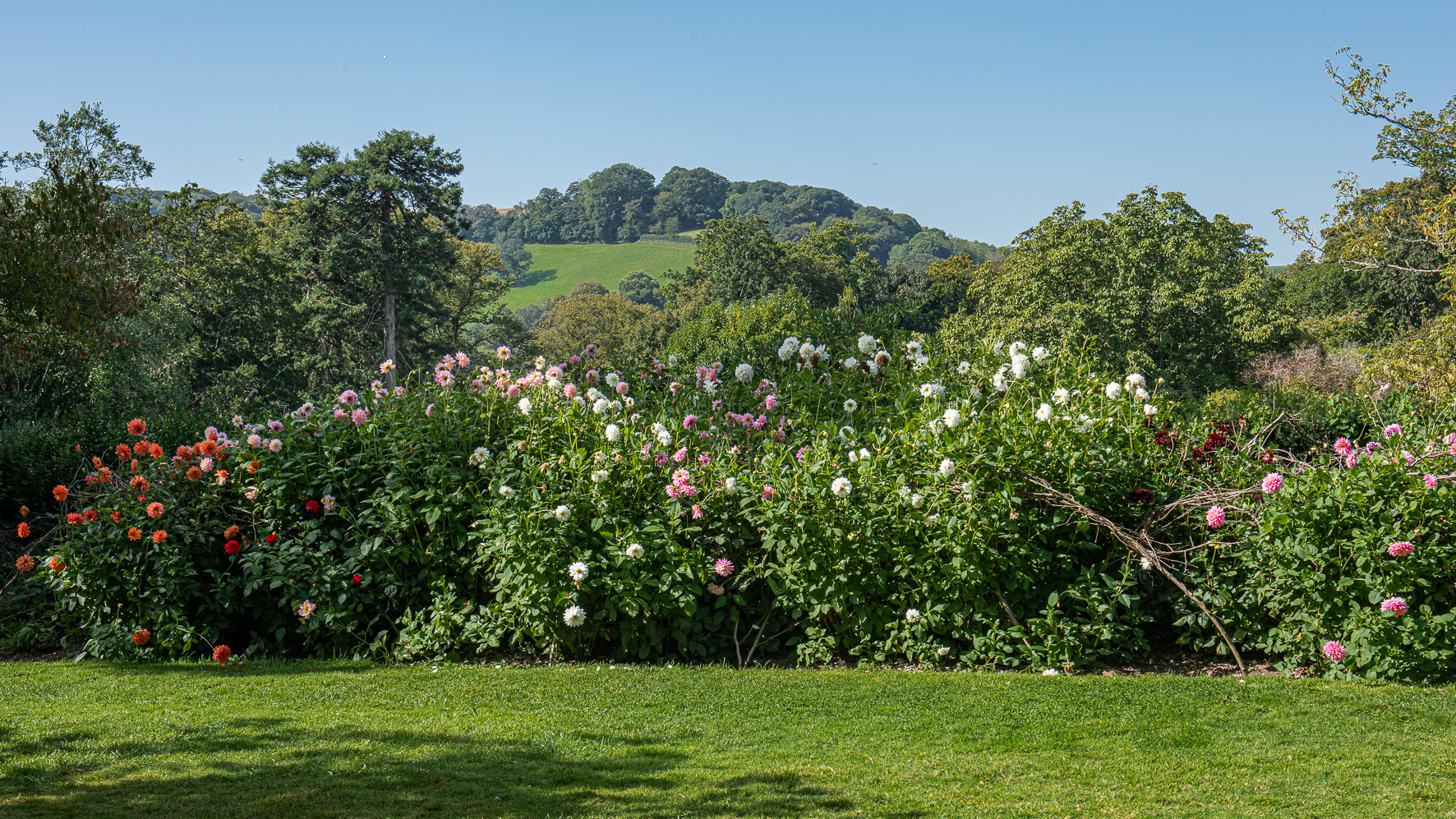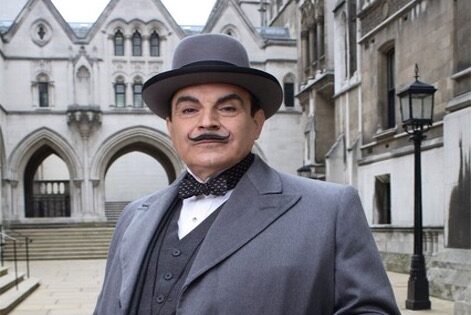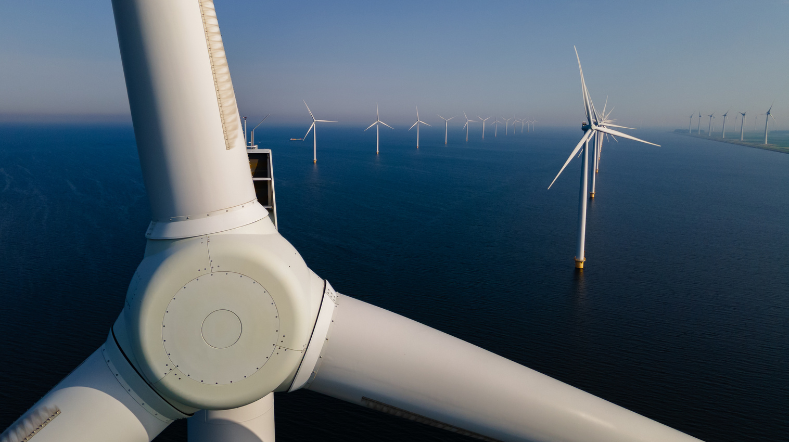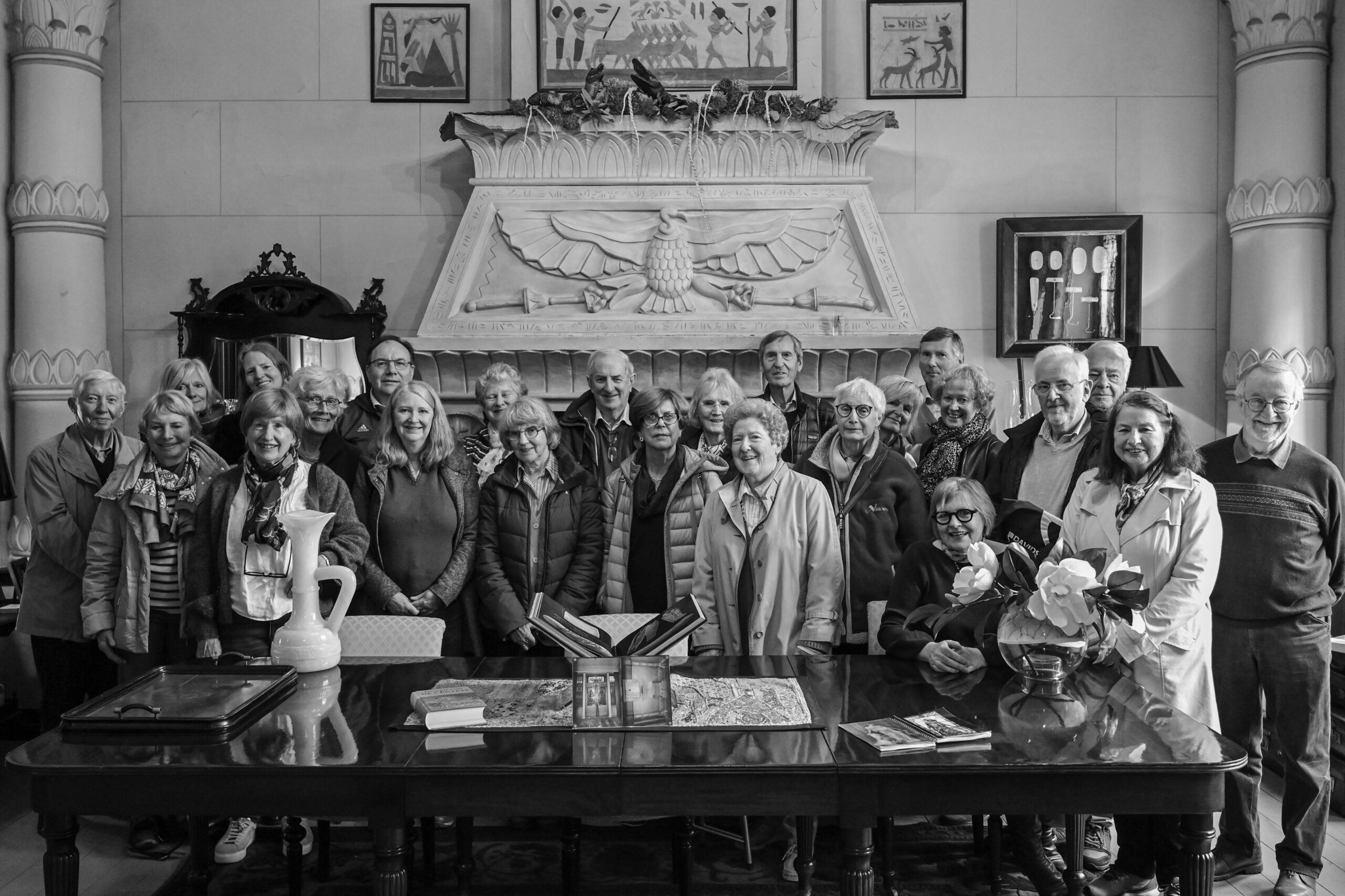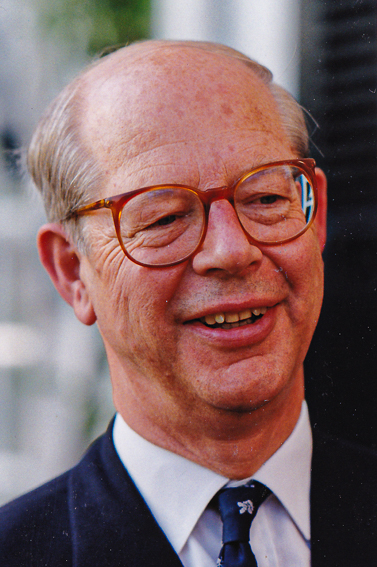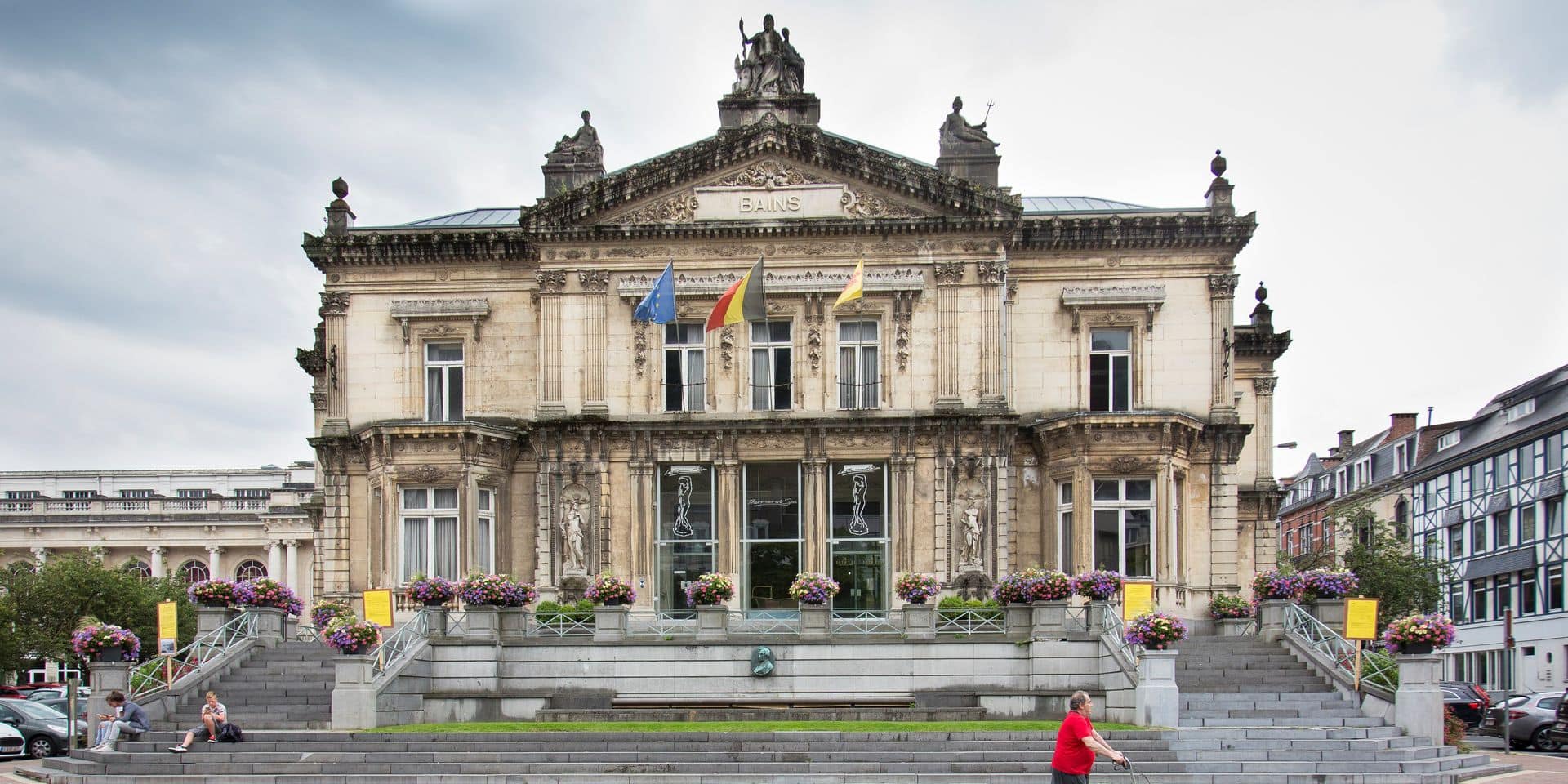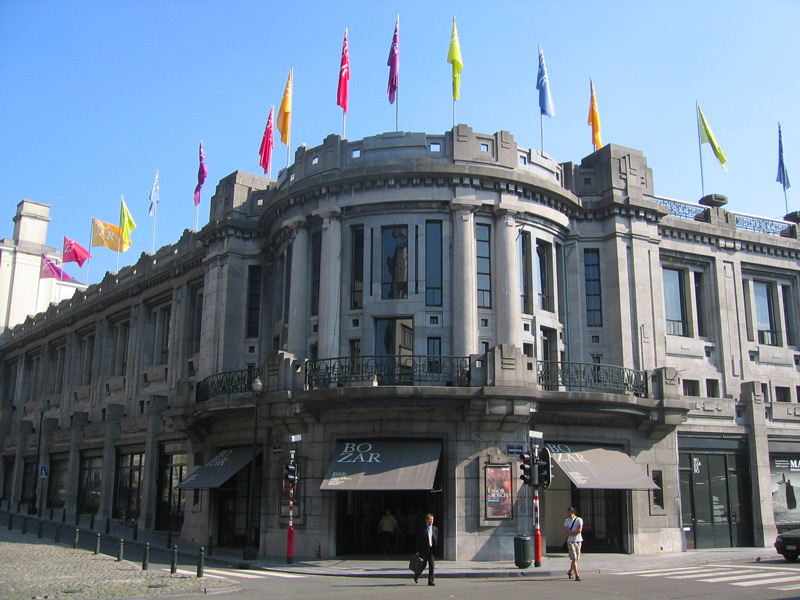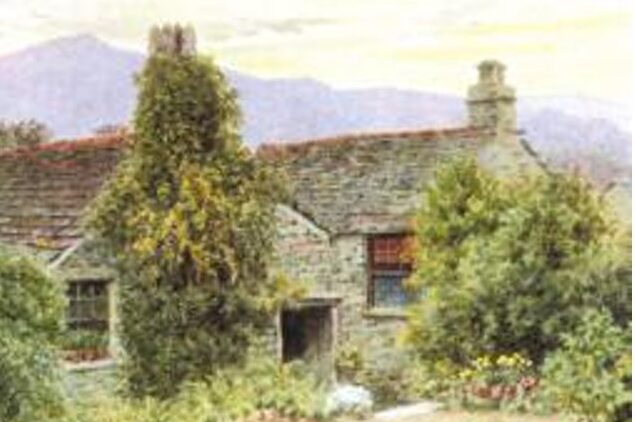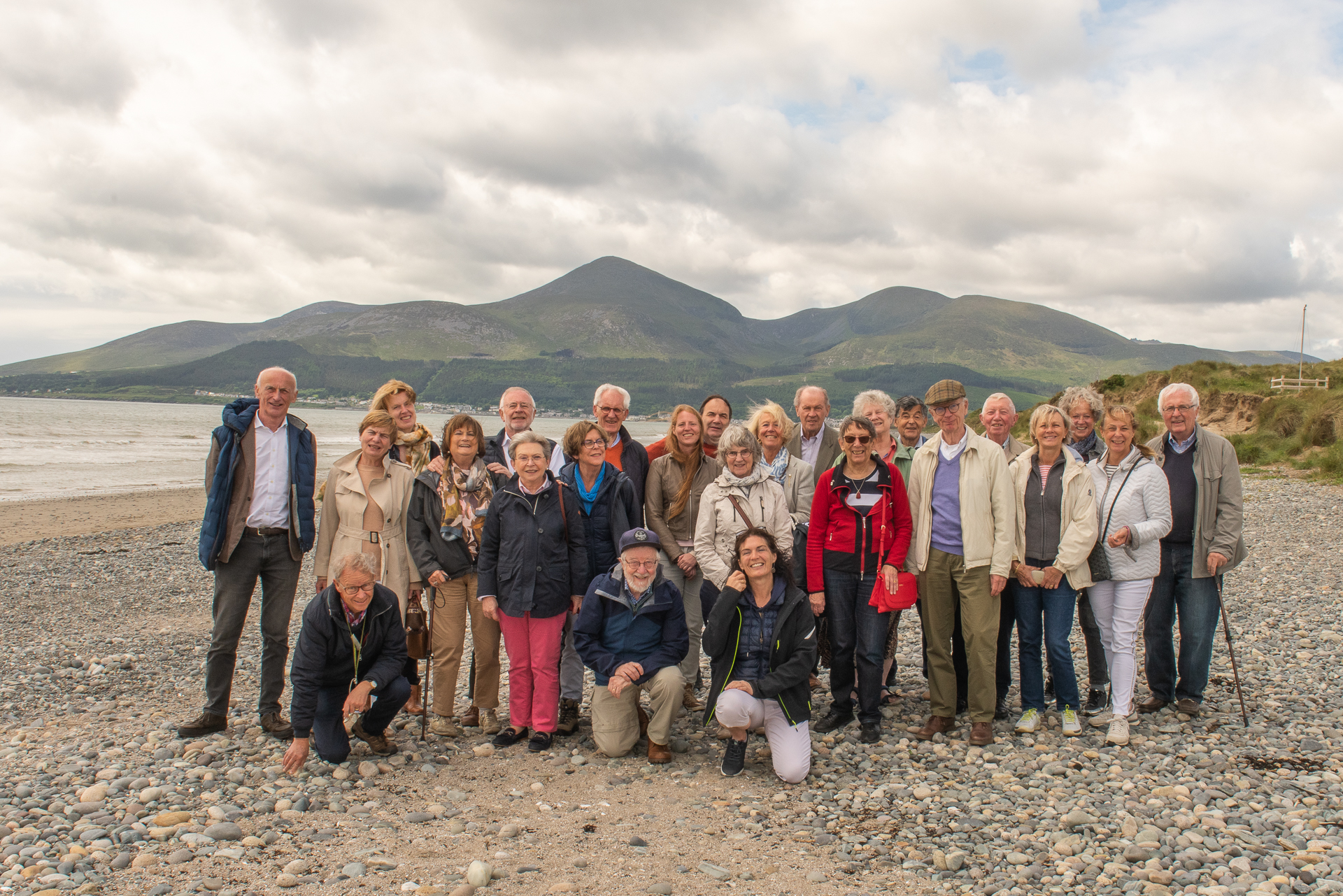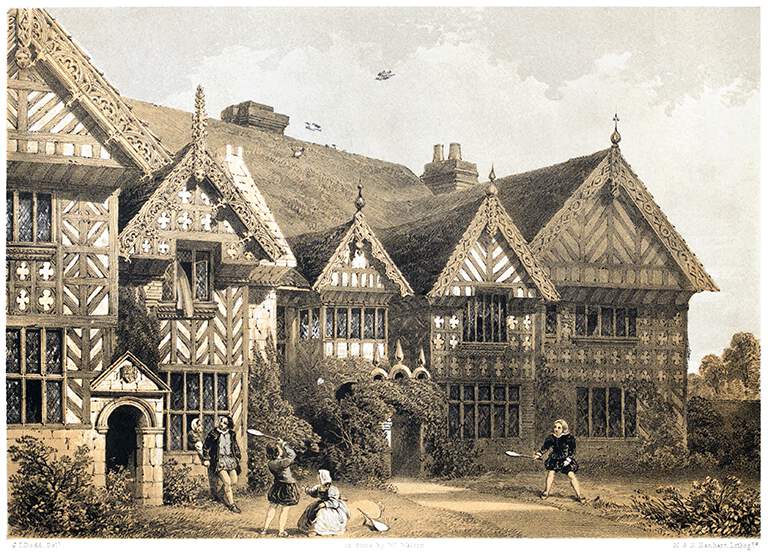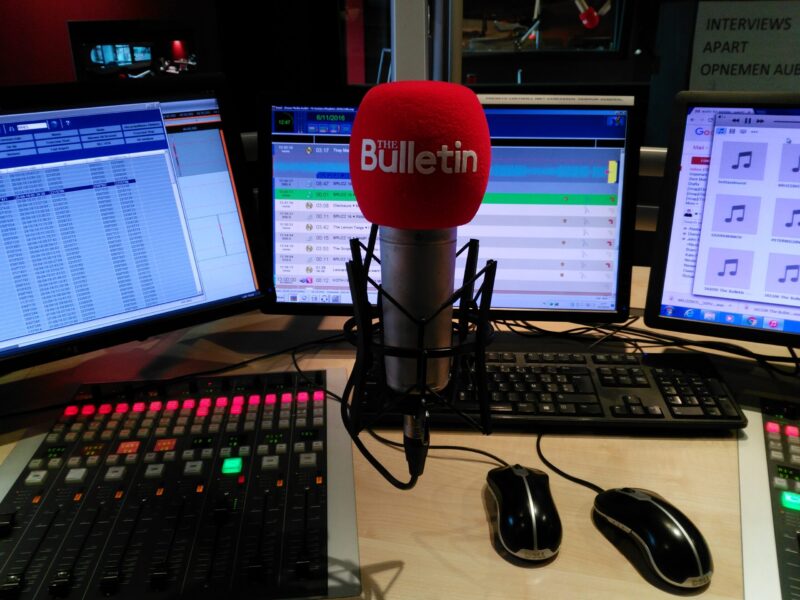Vroenhoven bridge & Fort Eben-Emael
The start of WW2 in Belgium, and the story of the Albert Canal.
By Tim Middleton
The day began, cold but sunny, at the Vroenhoven Bridge experience centre beside the Albert Canal. This modern museum was opened in 2015 to tell the story of the capture of the bridge and the construction of the canal. After lunch at the beautifully situated restaurant of the museum, Onder De Brug, we moved on to Fort Eben-Emael. The restaurant, just as its name suggests, is under the bridge and overlooks the canal. Our stoofvlees was made with Oudstrijder beer. Brewed in West Flanders and matured in Limburg, the beer recalls Belgium’s war history through its name (“old warrior”) and its production near the western and eastern ends of the front lines of both world wars.
Our excellent guides at the Vroenhoven Bridge museum took us through the build-up to the Second World War in Belgium, describing in detail the devastating Nazi invasion of 10 May 1940, when the bridge was captured in the first assaults on Belgian soil. The museum presents the events in a very accessible modern way. Although the texts are all in Dutch, there are many audio accounts in four languages of people involved in the history of the bridge.
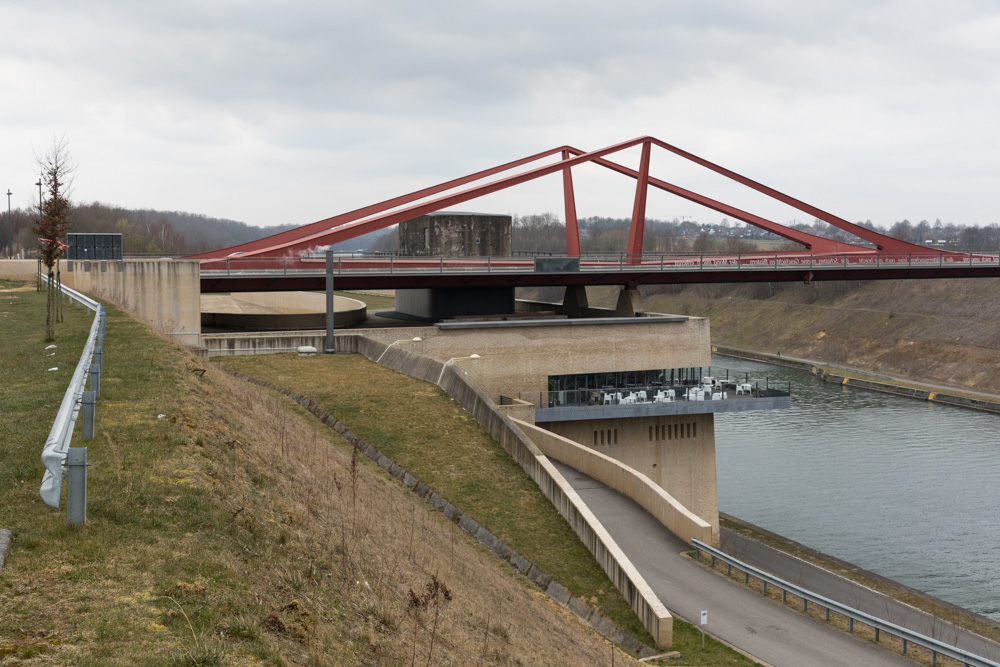
The second part of the museum describes the creation of the Albert Canal. Wholly within Belgium, but in places only a few metres from the Dutch border, the canal was constructed in the 1930s to link the port of Antwerp to Liège. It was enlarged in the 1960s to enable it to take 9,000-tonne vessels. Although there are six locks to overcome the 56-metre height difference between its western and eastern ends, vessels can now complete the journey from Antwerp to Liège in 18 hours.
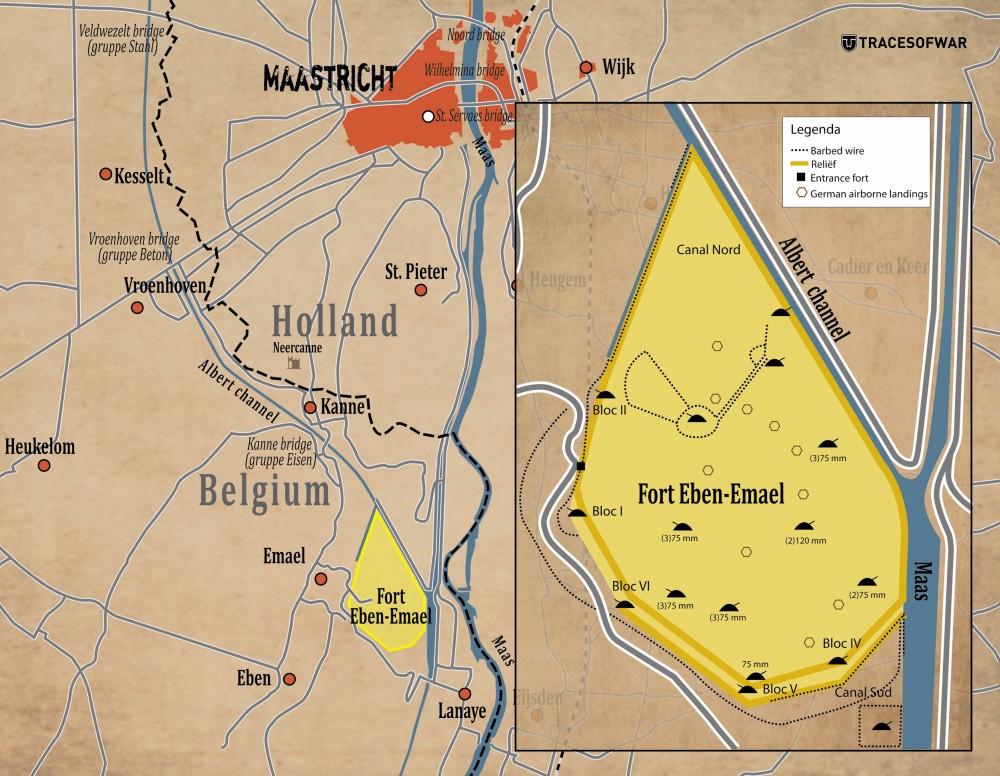
Fort Eben-Emael was completed in 1935. It was constructed to defend Belgium against invasion from the east. Built into a hillside, and thus almost wholly underground, it was believed to be the largest fort in the world at the time of its completion, and was thought to be impregnable. It was not. It fell at its first attack. The invasion came by air, and in silence, at dawn on 10 May 1940. The German army used gliders to land silently on the roof of the fort and at the bridges, including Vroenhoven, that crossed the Albert Canal. The troops defending the fort were prepared for a land attack from the east. They were not prepared for an assault from above. In the first strategic airborne operation ever attempted, the fort was taken in a few hours.
Our guides had been associated with the fort since soon after its opening as a museum in the 1990s. They led us through the extensive maze of corridors deep in the hillside, where we discovered the unpleasant living conditions of the garrison that was housed there and the sad story of the fort’s demise.
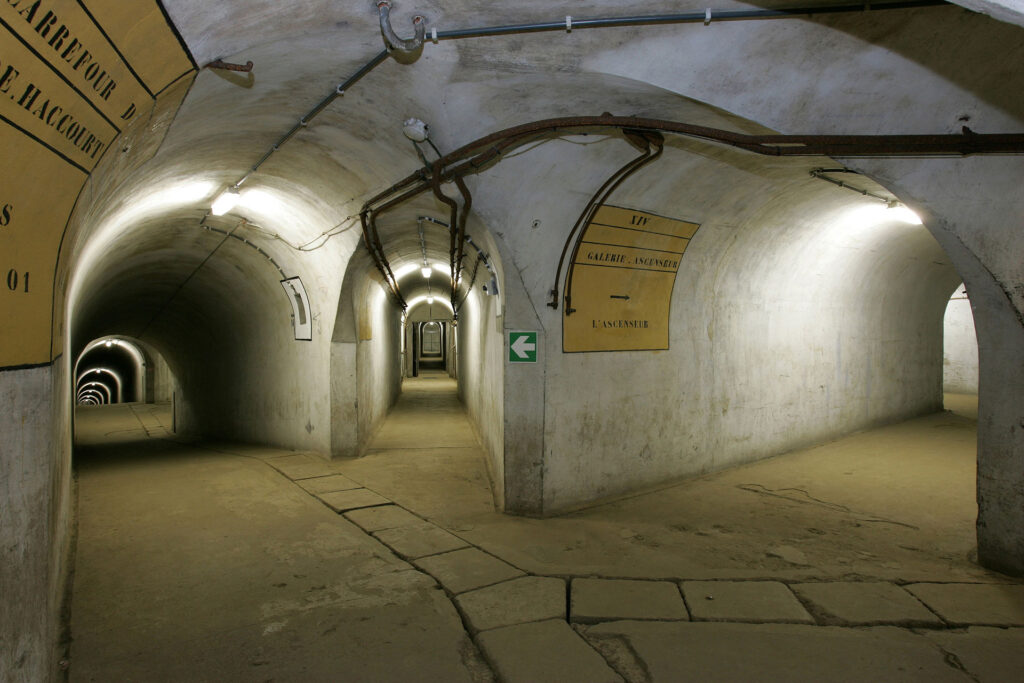
All in all, it was a moving, informative day, in which we learned much about the devastating shock of the rapid fall and occupation of Belgium in 1940.
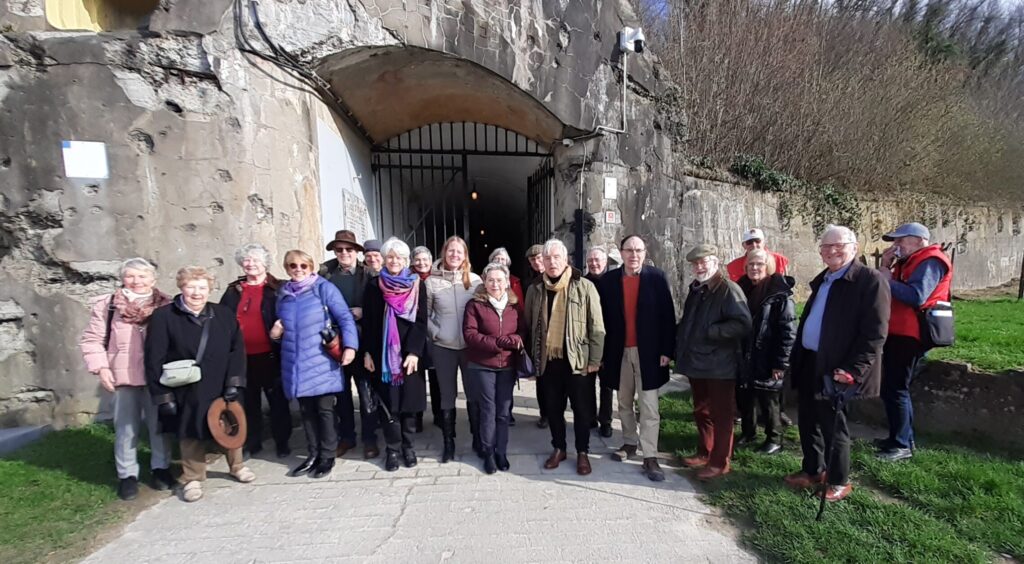
A personal addendum: There is a fabulous exhibition on the use of colour in ancient Greek and Roman statues at the Gallo-Roman Museum in Tongeren, where Janet and I made a stop the following day on our way back to Brussels. The exhibition, Antiquity in Colour, with text and audioguide in three languages, runs until 2 June. Highly recommended!
Comment by Ginny & Jon Caldwell
Thank you both, André and Tim, very much indeed for such a fascinating day exploring Vroenhoeven Bridge & Fort Eben-Emael. Excellent guides explained these two devastating defeats during the German Invasion of Neutral Belgium – and The Netherlands! A chilling visit, as tragically, it is all happening today. The photos & films we saw horrifically reminiscent of destroyed towns & refugees of the Ukraine & Gaza. Humour was almost non-existent – but fascinating to learn that the German uniforms were designed by Hugo Boss. No wonder they looked so smart!
Ginny & Jon Caldwell
